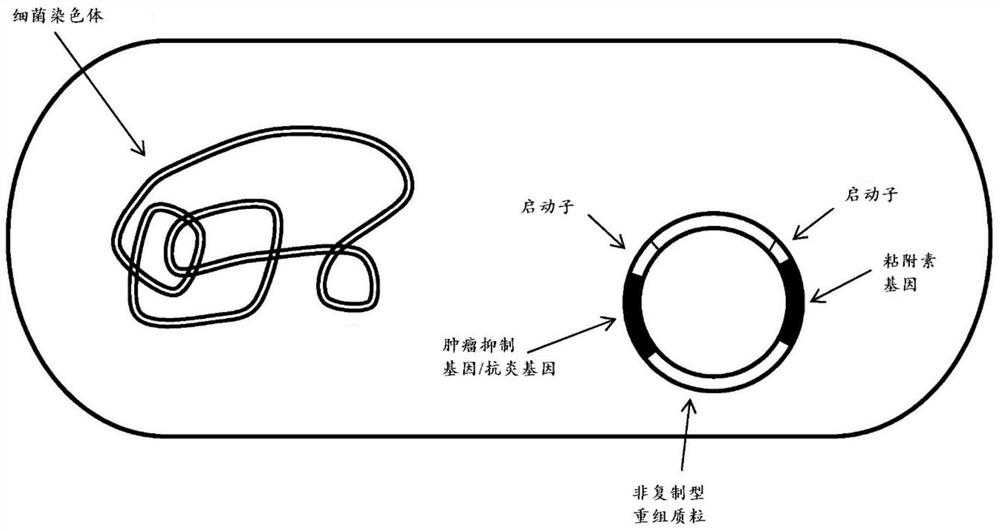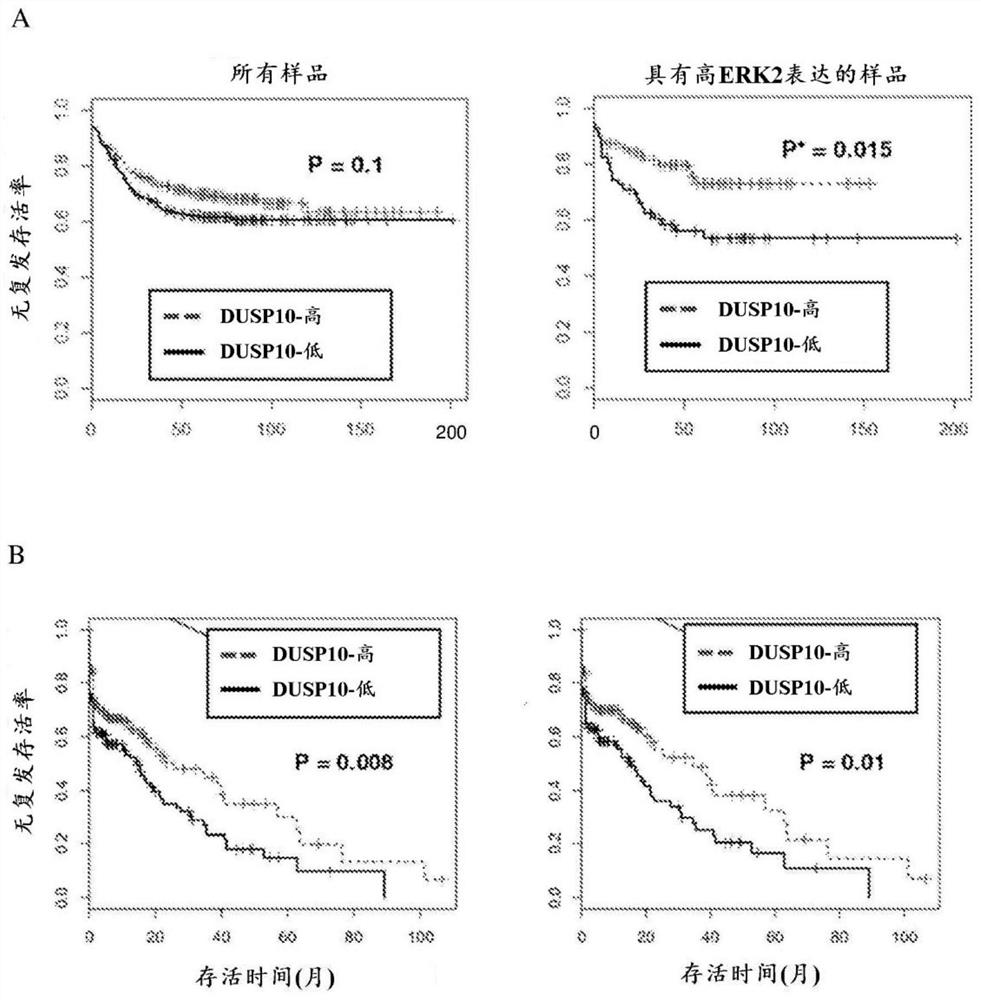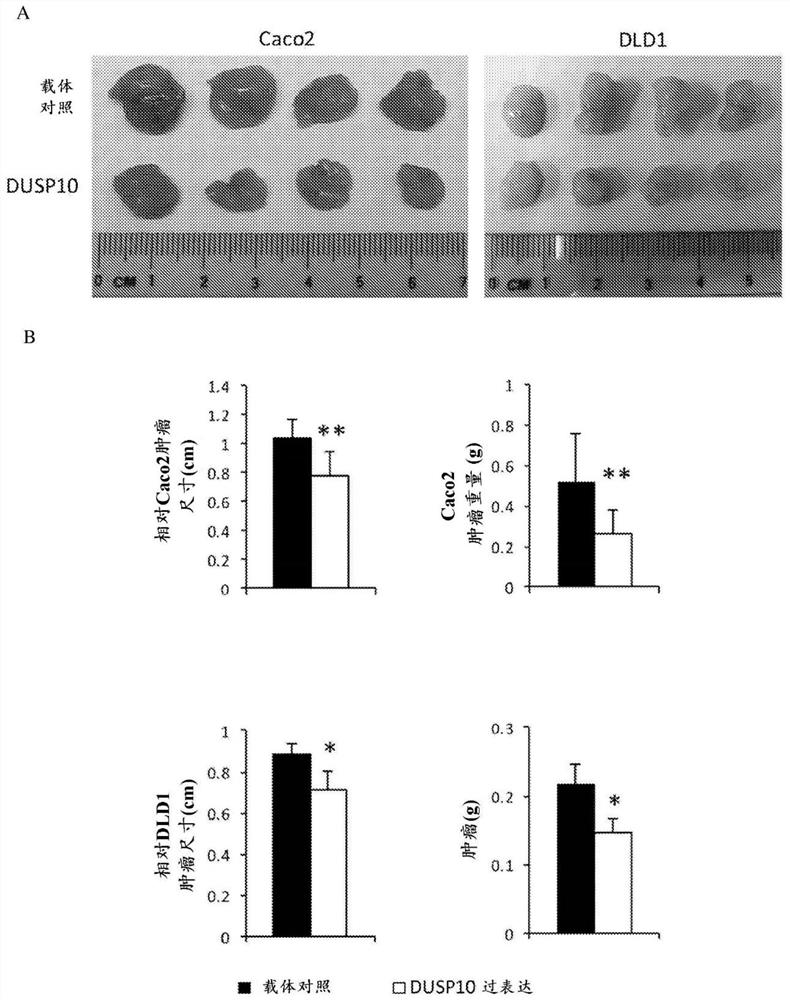Recombinant bacteria and uses thereof
A bacterial, cellular technology applied in the fields of microbiology and molecular biology to address issues such as easy bleeding or bruising, reduced resistance, and high initial response rates that do not translate into survival benefits
- Summary
- Abstract
- Description
- Claims
- Application Information
AI Technical Summary
Problems solved by technology
Method used
Image
Examples
Embodiment 1
[0090] Example 1: High DUSP10 expression is associated with better overall survival in CRC patients
[0091] Recently, more and more studies have confirmed that the dysregulation of DUSP expression is related to various cancers, and it is often reported that the functional alteration of DUSP is related to the alteration of MAPK activity in tumors. Published CRC survival datasets from Marisa L et al. (PLoS Med.2013.10, e1001453) and The Cancer Genome Atlas (TCGA) (Nature 2012.487, 330-337) were analyzed in detail to investigate the relationship between DUSP10 levels and CRC patient survival. plausible relationship. Such as figure 2 As shown in the patient cohort from Marisa L et al., the recurrence-free survival (RFS) probability of patients with tumors with high DUSP10 expression tended to be slightly higher (P=0.1) ( figure 2 A, left panel). After stratifying samples for ERK expression, high DUSP10 in tumors was found to be associated with approximately 20% higher probab...
Embodiment 2
[0092] Example 2: Overexpression of DUSP10 in human CRC cells inhibits growth and metastasis of cancer cells
[0093] To confirm the tumor suppressor function of DUSP10, human CRC cell lines Caco2 and DLD1 stably overexpressing DUSP10 were generated for implantation as tumor xenografts in immunocompromised mice. The results showed that DUSP10 overexpression reduced tumor growth in vivo ( image 3 ). The key difference between these two cell lines is the presence of a KRAS mutation (G13D) in DLD1, whereas wild-type KRAS is found in Caco2. This suggests that overexpression of DUSP10 can effectively inhibit tumor cell growth regardless of KRAS status. Interestingly, overexpression of DUSP10 in HCT116 human CRC cells carrying a Kras mutation (G13D) caused a decrease in liver metastases ( Figure 4 ). In this experiment, HCT116 cells overexpressing DUSP10 or a control vector were injected into the spleen of immunocompromised NSGS mice for metastasis within 3 weeks. In the live...
Embodiment 3
[0094] Example 3: Development of Lactococcus lactis expressing fibronectin binding protein (Lactococcus lactis-Fnb-DUSP10) for delivery of DUSP10 expression plasmid
[0095] DNA plasmids carrying (1) fibronectin-binding protein (Fnb) from Staphylococcus aureus and (2) human DUSP10 gene insertion sequences were constructed by modifying the vector backbone pTRKH3-ermGFP (Addgene Company). Figure 5 ). The resulting DNA plasmid was transformed into Lactococcus lactis (ATCC) by electroporation and selected on the basis of erythromycin resistance. Single positive clones were subsequently isolated and stored in 20% sterile glycerol until required for use. For all subsequent infection experiments, three different controls were performed, including an untreated group, a group infected with Lactococcus lactis carrying the vector backbone ("Lactococcus lactis-vector"), and a group infected with Lactococcus lactis carrying only the Fnb gene insert. The vector backbone of the group of L...
PUM
| Property | Measurement | Unit |
|---|---|---|
| length | aaaaa | aaaaa |
Abstract
Description
Claims
Application Information
 Login to View More
Login to View More - R&D
- Intellectual Property
- Life Sciences
- Materials
- Tech Scout
- Unparalleled Data Quality
- Higher Quality Content
- 60% Fewer Hallucinations
Browse by: Latest US Patents, China's latest patents, Technical Efficacy Thesaurus, Application Domain, Technology Topic, Popular Technical Reports.
© 2025 PatSnap. All rights reserved.Legal|Privacy policy|Modern Slavery Act Transparency Statement|Sitemap|About US| Contact US: help@patsnap.com



